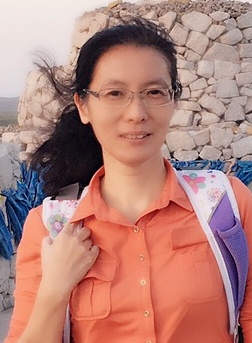国家天文台人才库
- 姓名: 张枚
- 性别: 女
- 职称: 研究员
- 学历:
- 电话: 86-10-64888764
- 传真:
- 电子邮件: zhangmei@bao.ac.cn
- 通讯地址 A235

学历:
1994.11 - 1999.08 中国科学院北京天文台 博士
1987.09 - 1990.10 中国科学院北京天文台 硕士
1983.09 - 1987.07 北京大学 学士
工作经历:
2003.01至今: 研究员(中国科学院国家天文台)
2004.04至今: 客座教授(美国国家大气研究中心)
2001.10-2004.03: 项目科学家(美国国家大气研究中心高山天文台)
2000.11-2001.10: 博士后(美国国家大气研究中心高山天文台)
2000.03-2000.10: 副研究员(中国科学院北京天文台)
1994.05-2000.03: 助理研究员(中国科学院北京天文台)
1990.10-1994.05: 研究实习员(中国科学院北京天文台)
简历:
太阳物理。具体为:太阳日冕中的磁流体动力学过程、太阳日冕物质抛射模型、太阳光球矢量磁场的观测和分析、太阳发电机模型的观测限制。
研究领域:
承担科研项目情况:
- 2004.04起 客座教授(美国国家大气研究中心) 2012年起 IAU住国际组织SCOSTEP代表
社会任职:
获奖及荣誉:
- 1. Magnetic helicity of self-similar axisymmetric force-free fields, M. Zhang, N. Flyer, B. C. Low, 2012, ApJ, 755, 78
2. The dependence of the helicity bound of force-free magnetic fields on the boundary conditions, M. Zhang, N. Flyer, 2008, ApJ, 683, 1160-1167.
3. Helicity observation of weak and strong fields, M. Zhang, 2006, ApJ, 646, L85-L88
4. Magnetic field confinement in the corona: The role of magnetic helicity accumulation, M. Zhang, N. Flyer, B. C. Low, 2006, ApJ, 644, 575-586.
5. The hydromagnetic nature of solar coronal mass ejections, M. Zhang, B. C. Low, 2005, Annual Reviews of Astronomy and Astrophysics, 43, 103-137.
6. Magnetic energy storage in the two hydromagnetic types of solar prominences, M. Zhang, B. C. Low, 2004, ApJ, 600, 1043-1051.
7. The dynamical morphologies of flares associated with the two types of solar coronal mass ejections, M. Zhang, L. Golub, 2003, ApJ, 595, 1251-1258.
8. Magnetic-flux emergence into the solar corona. III. The role of total helicity conservation, M. Zhang, B. C. Low, 2003, ApJ, 584, 479-496.
9. The timing of flares associated with the two dynamical types of solar coronal mass ejections, M. Zhang, L. Golub, E. DeLuca, J. Burkepile, 2002, ApJ, 574, L97-L100.
10. Magnetic-flux emergence into the solar corona. I. Its role for the reversal of global coronal magnetic field, M. Zhang, B. C. Low, 2001, ApJ, 561, 406-419.
